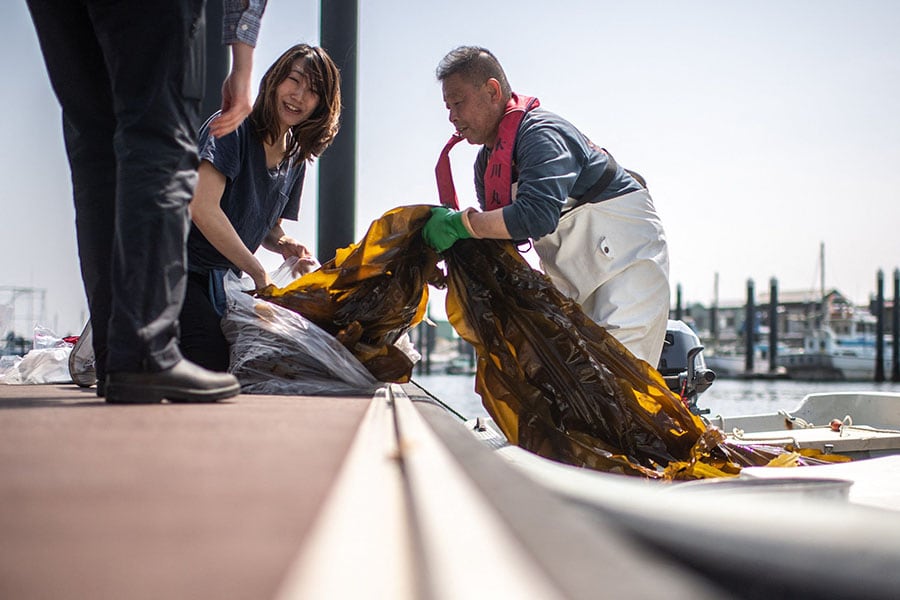
From soup stock to super crop: Japan shows off its seaweed savvy
Japan has a history of eating seaweed. But there is a shift in perspective that is now also leaning towards farming the plant from an environmental and ecological point of view
 Fisherman Ryoichi Kigawa (R) handling kelp at a fishing port in Yokohama, Kanagawa Prefecture. Image: Philip Fong/ AFP
Fisherman Ryoichi Kigawa (R) handling kelp at a fishing port in Yokohama, Kanagawa Prefecture. Image: Philip Fong/ AFP
Seaweed has long been a staple food in Japan, but the chunky, slimy kelp hauled into fisherman Ryoichi Kigawa's boat is also starting to attract international attention for its potential as an eco-friendly supercrop.
Research into new applications for the marine plant—from carbon absorption to reducing methane emissions from cattle—is flourishing, and countries are looking to Asia's seaweed savvy to develop their own industries.
Most of the kelp harvested by Kigawa and his colleagues at their port in Yokohama is sold to be boiled in soup stock and added to healthy salads.
But some will go to projects run by the organisation Sachiumi Heroes "to preserve the ecosystem and tackle global warming", said the group's founder, Tatsunori Tomimoto.
"The Japanese have a history of eating seaweed, but we haven't ever really thought of farming it from an environmental or ecological point of view," he told AFP.







